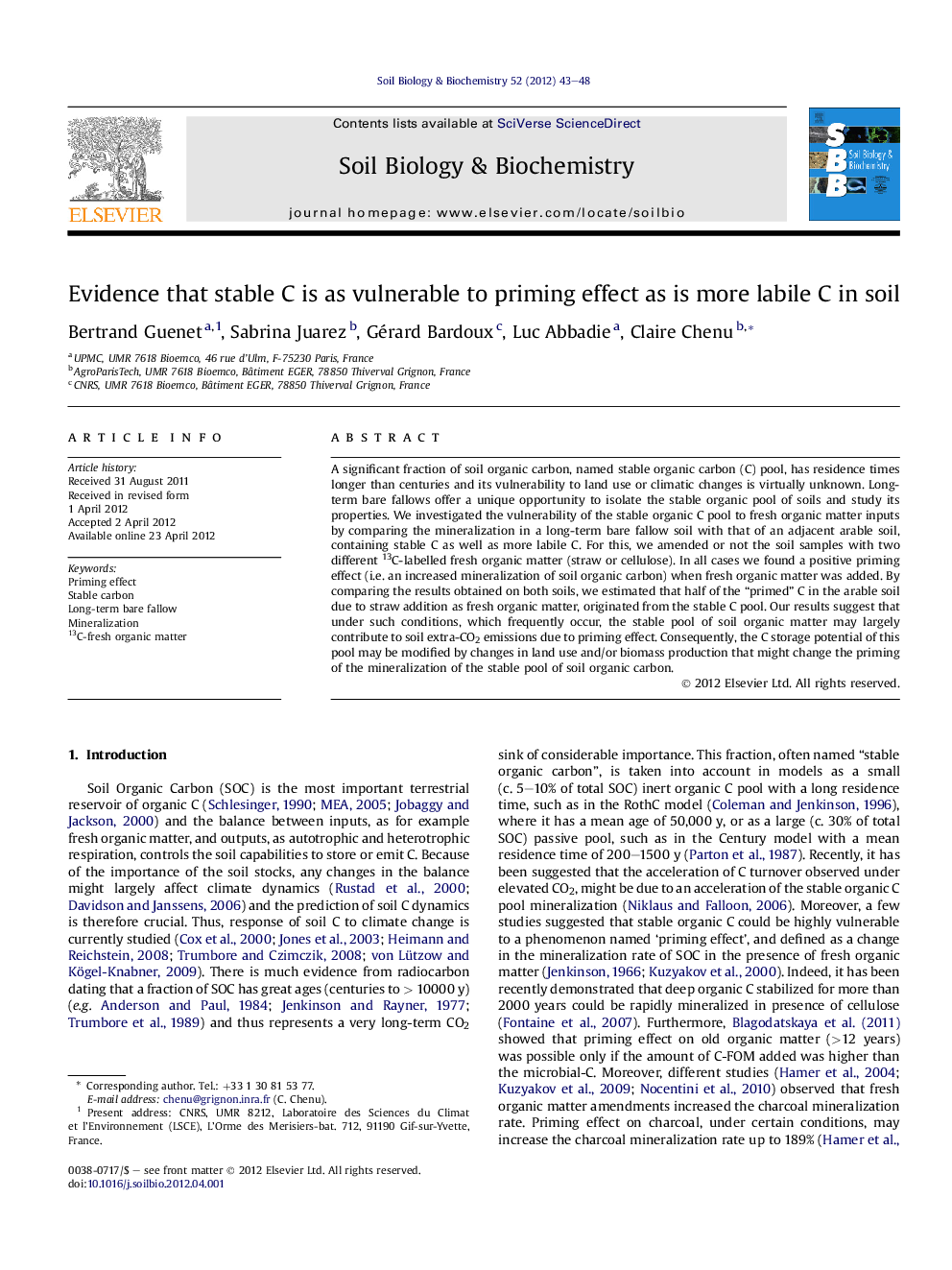| Article ID | Journal | Published Year | Pages | File Type |
|---|---|---|---|---|
| 2024984 | Soil Biology and Biochemistry | 2012 | 6 Pages |
A significant fraction of soil organic carbon, named stable organic carbon (C) pool, has residence times longer than centuries and its vulnerability to land use or climatic changes is virtually unknown. Long-term bare fallows offer a unique opportunity to isolate the stable organic pool of soils and study its properties. We investigated the vulnerability of the stable organic C pool to fresh organic matter inputs by comparing the mineralization in a long-term bare fallow soil with that of an adjacent arable soil, containing stable C as well as more labile C. For this, we amended or not the soil samples with two different 13C-labelled fresh organic matter (straw or cellulose). In all cases we found a positive priming effect (i.e. an increased mineralization of soil organic carbon) when fresh organic matter was added. By comparing the results obtained on both soils, we estimated that half of the “primed” C in the arable soil due to straw addition as fresh organic matter, originated from the stable C pool. Our results suggest that under such conditions, which frequently occur, the stable pool of soil organic matter may largely contribute to soil extra-CO2 emissions due to priming effect. Consequently, the C storage potential of this pool may be modified by changes in land use and/or biomass production that might change the priming of the mineralization of the stable pool of soil organic carbon.
► Soil stable C from a long term bare fallow can be de-stabilized by priming effect. ► Priming effect intensity dependend on fresh OM quality. ► Priming intensity was little or not affected by the amount of fresh OM added. ► 9-46% of mineralized SOC due to priming effet originated from stable C.
